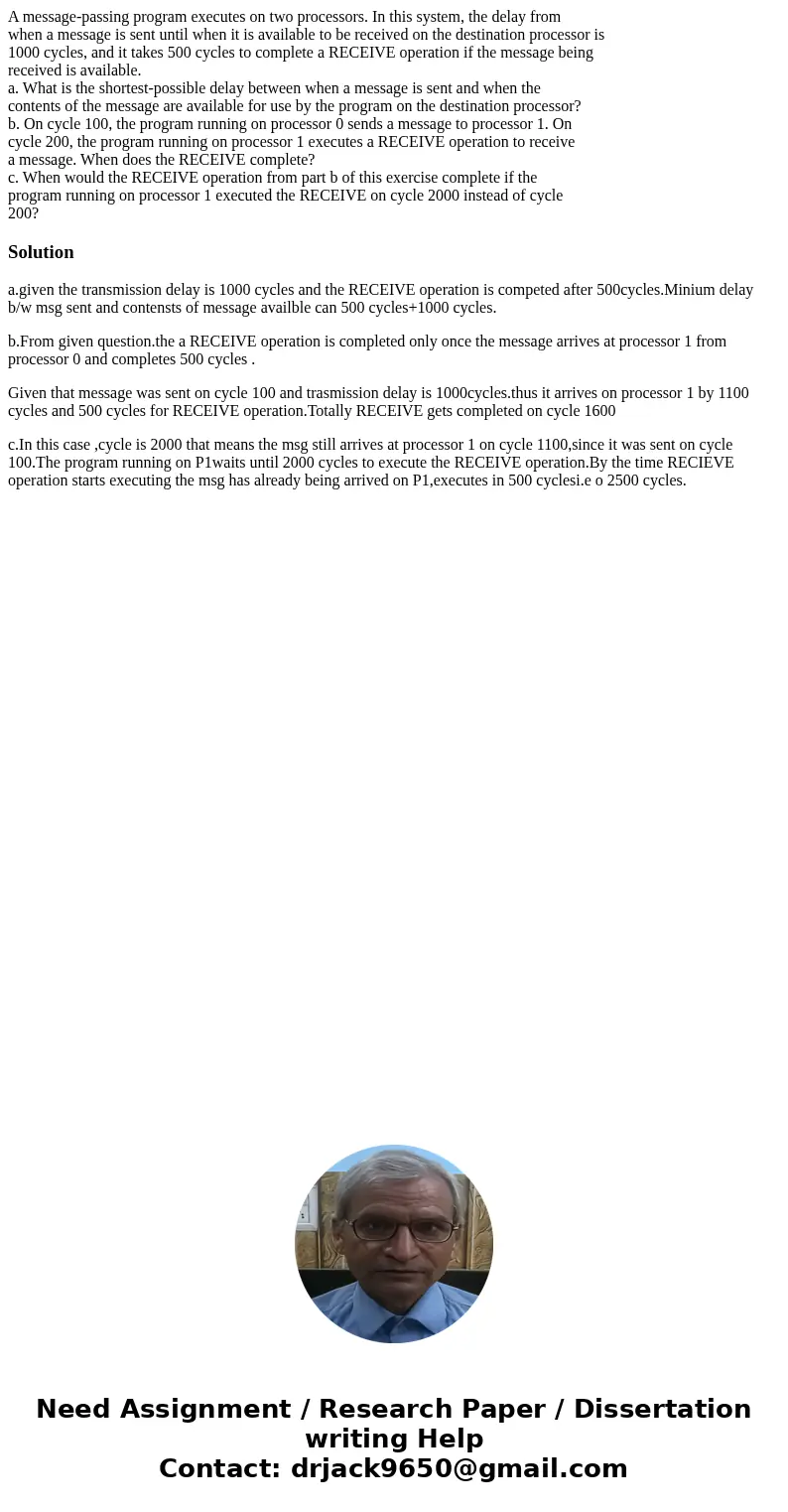A messagepassing program executes on two processors In this
A message-passing program executes on two processors. In this system, the delay from
when a message is sent until when it is available to be received on the destination processor is
1000 cycles, and it takes 500 cycles to complete a RECEIVE operation if the message being
received is available.
a. What is the shortest-possible delay between when a message is sent and when the
contents of the message are available for use by the program on the destination processor?
b. On cycle 100, the program running on processor 0 sends a message to processor 1. On
cycle 200, the program running on processor 1 executes a RECEIVE operation to receive
a message. When does the RECEIVE complete?
c. When would the RECEIVE operation from part b of this exercise complete if the
program running on processor 1 executed the RECEIVE on cycle 2000 instead of cycle
200?
Solution
a.given the transmission delay is 1000 cycles and the RECEIVE operation is competed after 500cycles.Minium delay b/w msg sent and contensts of message availble can 500 cycles+1000 cycles.
b.From given question.the a RECEIVE operation is completed only once the message arrives at processor 1 from processor 0 and completes 500 cycles .
Given that message was sent on cycle 100 and trasmission delay is 1000cycles.thus it arrives on processor 1 by 1100 cycles and 500 cycles for RECEIVE operation.Totally RECEIVE gets completed on cycle 1600
c.In this case ,cycle is 2000 that means the msg still arrives at processor 1 on cycle 1100,since it was sent on cycle 100.The program running on P1waits until 2000 cycles to execute the RECEIVE operation.By the time RECIEVE operation starts executing the msg has already being arrived on P1,executes in 500 cyclesi.e o 2500 cycles.

 Homework Sourse
Homework Sourse